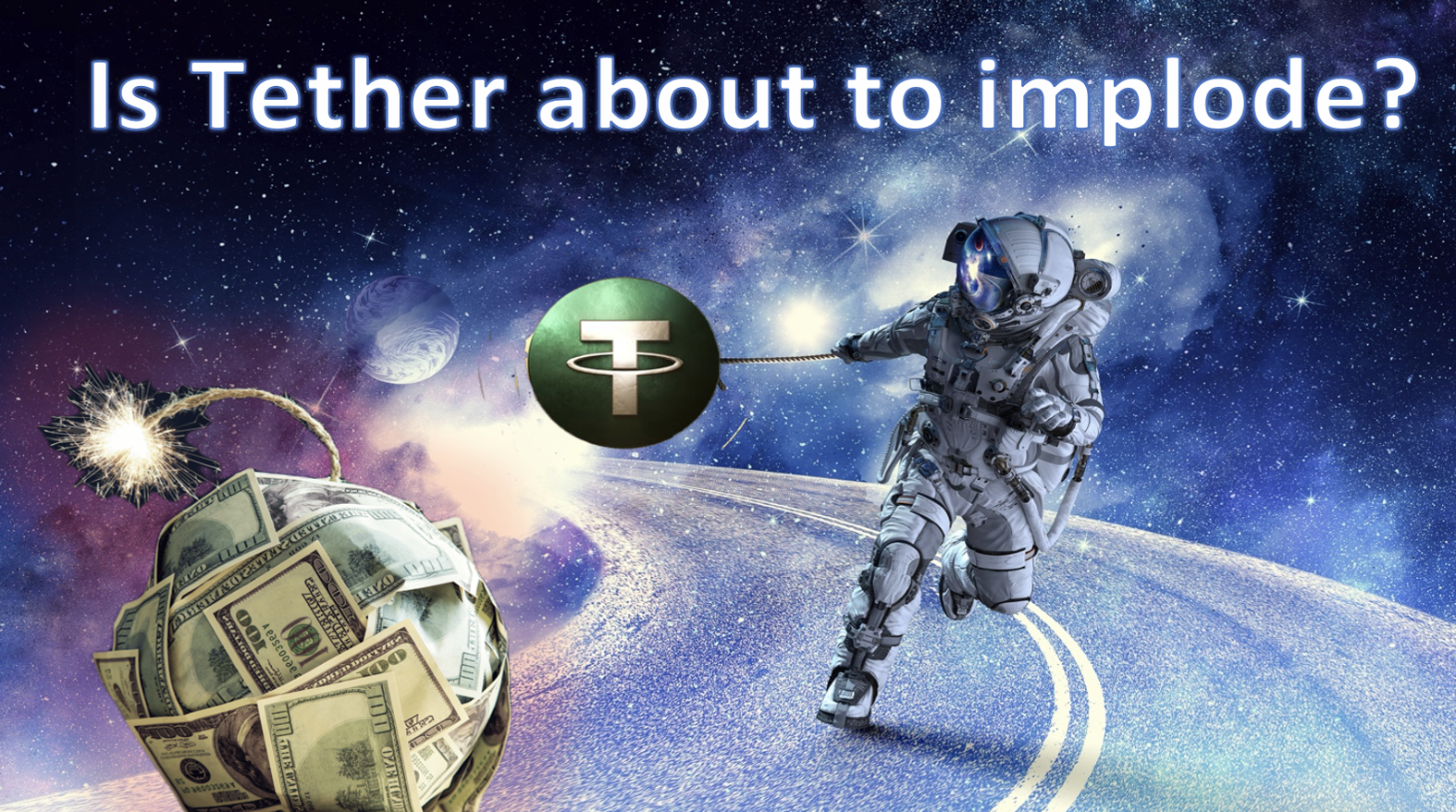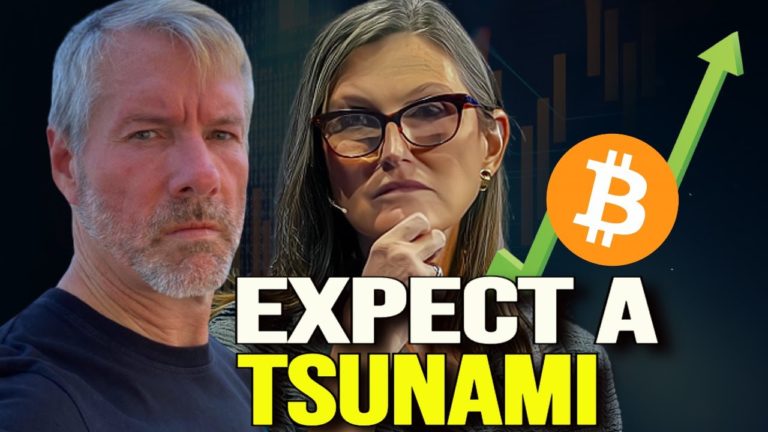There are alarms flashing red related to the fiat-pegged cryptocurrency called Tether. And if regulators do not act quickly, this could be to the detriment of the entire crypto industry. Eyebrows have been raised by U.S. Senators who are demanding answers, but still no action by Congress. Untethering Tether from the entire crypto market may be virtually impossible at this point; but lawmakers may be able to prevent a market disaster by regulating Tether.
Tether is a time bomb growing out-of-control. And even though cryptocurrencies, in general, have been misunderstood and improperly regulated by lawmakers… when it comes to Tether, Congress does need to act urgently.
But before we dive in, let’s get up to speed on Tether’s history, and find out why regulation may be the best solution to the stablecoin gone awry.
What are stablecoins? And what is Tether?
Stablecoins are any number of fiat-pegged, or stable-asset pegged, cryptocurrencies designed to replicate the value of a stable asset (I know, at this point calling inflationary fiat a stable asset is a misnomer at best). Tether is by far the most popular stablecoin, with a total market cap of 75 billion dollars at the time of writing this article. Tether is especially used by crypto traders, as it allows for the frictionless movement of crypto between crypto assets. It also helps enable leverage-trading on crypto exchanges. More on this later.
Tether began as Real Coin back in July of 2014 and was rebranded into Tether during December of that same year. Its growth rate is breathtaking. Look at this chart below charting Tether’s rise in market capitalization from $1.9 billion in January of 2019 to $72 billion today.

Tether was initially tokenized on the Bitcoin blockchain. Through the Omni protocol, its tokens can be created and destroyed on the Bitcoin network depending on the underlying US dollars backing it. This creation and destruction of Tether based on deposit and withdrawals was how it was meant to uphold a 1:1 ratio with US dollars held in reserves (this is no longer the case). Notably, Tether has also been deployed on other blockchains such as Ethereum.
Another key element to consider is Tether’s ability to transcend the obstacles of our current fiat system, as Tether can be exchanged peer-to-peer, frictionlessly across borders. This cuts out the middleman and unlocks enormous cost savings as it relates to banking infrastructure and international transaction fees.
Unfortunately, the original intention surrounding Tether fell apart. And right now, the ground beneath Tether is unstable and trembling. Tether may be ready to blow the top off the Richter scale. Pressure is mounting and regulators may pursue legal action against Tether, which could result in a catastrophe.
What’s at the heart of Tether’s instability and controversy?
Consider this, at launch Tether had no value. It is only through adoption and acceptance among people that the token has gained formidability on exchanges. Much like fiat currency, faith in Tether is dependent upon users believing that the asset is secure. U.S. dollars are supported by the The People’s faith in the U.S. government and the Federal Reserve, while Tether was supposed to be supported by these US dollars.
Traders on crypto exchanges, who first started using Tether, were convinced by its white paper that Tether was backed 1:1 with US dollars. The white paper states:
In order to maintain accountability and to ensure stability in exchange price, we propose a method to maintain a one-to-one reserve ratio between a cryptocurrency token, called tethers, and its associated real-world asset, fiat currency. This method uses the Bitcoin blockchain, Proof of Reserves, and other audit methods to prove that issued tokens are fully backed and reserved at all times…
And how does this Proof of Reserve system work?
The Tether white paper goes on…
The corresponding total amount of total amount of USD held in our reserves is proved by publishing the bank balance and undergoing periodic audits by professionals.
And herein lies the issue. Tether never published the bank balance and when it finally did an audit, it was not solely backed by U.S. dollars. This is also why the CFTC ordered Tether to Pay $41 million dollars back in October for misleading the public on Tether’s claims that the token is backed 1:1. This simply just isn’t the case.
After an investigation into Tether, it was determined that Tether did not provide Proof of Reserves as stated in its white paper. One would think this lawsuit alone would send users of the Tether token running for the exit. But it did not. The chart above shows that Tether’s market cap continued to rise even after the lawsuit. It is still rising today.
One must ask: If Tether is not supported solely by US Dollars, then what other assets are backing it?
This is where the plot thickens. Rather than walk you through the history of Tether ownership beginning with childhood actor Brock Pierce, we will fast-forward to its current CEO Jan Ludovicus van der Velde, who also happens to be the CEO of Bitfinex. Bitfinex is a major Bitcoin exchange that was also fined 1.5 million dollars by the CFTC in October 2021 in relationship to defrauding the public.
Not only is Jan Ludovicus van der Velde tied to both Tether Limited (the corporation responsible for Tether’s underlying assets) and Bitfinex, so too are the owners of these companies. Tether Limited and Bitfinix also have common management and major shareholders sharing roles in both companies.
It is through this relationship that Tether Limited essentially bailed out Bitfinex by loaning out Tether’s reserves to cover up stolen (or lost money). The New York attorney general has alleged that Bitfinex used Tether Reserves to mask an $850 million dollar loss.
In other words, Tether’s one to one dollar pegged reserve claims were broken and continues to be untethered. Tether loaned a portion of its reserves to Bitfinex, giving the struggling exchange time to raise funds on its own to support needed liquidity. When $850 million dollars is lost or stolen from an exchange, you can be sure its customers will run for the exit. Without Tether to bail it out, the exchange would have become insolvent.
Curiously, it was also around this time that Tether changed the verbiage on its web site to imply that Tether is not backed solely by US dollars in a 1:1 ratio, but that it is asset backed instead.
Thus, the original promise of Tether’s white paper no longer had merit: Tether became untethered.
Under scrutiny, and in an attempt to save face, Tether released a report on June 30 of this year describing its assets. These assets were in excess of its liabilities at the time. Its liabilities are the total market cap of Tether (the minted coins).

But there are more alarming conclusions to be drawn here.
Firstly, look how far away Tether has swayed from the original white paper’s declaration that Tether is backed 1:1 by US dollars. Tether has transformed itself into an unregulated bank without any regulator to report to.
Secondly, the report does not provide any specifics regarding any of the risks embedded in these assets: commercial paper, by which companies? Digital assets, which digital assets? Are the digital assets cryptocurrencies, NFTs, DeFi staking pools? The report also leaves one to wonder… are the secure loans part of the $850 million dollar bailout to Bitfinex? Did Tether provide loans to other companies as well? Lastly, how stable are the companies that these funds were lent to?
Tether, by not being pegged to a 1:1 ratio, means that should any one of these underlying assets default, then the assets backing Tether could drop below Tether’s total liability, which is the printed Tether represented by the total market cap.
And this brings us to the present, and why an untethered tether could send the entire crypto market into a meltdown.
Many of you may have felt the pains of the 2008 housing crisis when home values were cut in half and the economy grinded to a halt. There were many factors leading to this black swan event. But its primary culprit were complex derivative products built off real estate backed mortgages, which were pooled, packaged, and repackaged, then traded between banks in the form of all kinds of complex financial products known as derivatives.
These complex Mortgage-Backed-Security products were bought with leverage, which essentially means they were purchased with borrowed money based on credit. At that time, even within a regulated housing market, the whole house of cards still crashed and tumbled because of over-leveraged positions extending far beyond its underlying asset’s value, which in this case was the value of people’s homes.
How does this relate to Tether?
Well firstly, the mortgage crisis gained steam as our homes declined in value. This is because the credit granted to leveraged positions were also tied to its borrower’s real estate portfolios.
When banks make credit decisions, they consider the value of a borrower’s investment portfolio when granting credit (funds). This goes beyond just lending to individuals, it extends to institutions and businesses also looking to borrower money. Thus, as the housing market declined, so too did the value of the real property that was supporting these leveraged positions.
In fact, the leveraged positions themselves were transformed into financial products known as mortgage-backed-securities. Institutions were lent money based on the quality of their debt portfolios. So, by having a high quality, real estate backed debt portfolio… institutions were able to receive even more money. The value of these derivatives time bombs far exceeded the value of their underlying real estate assets.
Think of it this way… there was money being lent out based on the money that was already lent out. Mortgage debt became its own asset class. And when the asset behind the over-leveraged and unregulated positions collapsed, i.e., the values of our homes—it sent the entire housing market and global economy into a tailspin.

But one last point regarding the Great Recession before we compare this with crypto. To combat inflation, the Federal Reserve was forced to increase interest rates to prevent the economy from overheating. This steady increase in rates tightened money supply leading up to the 2008 housing crisis. And when people became less willing to borrow, it put downward pressure on the price of their homes. The amount owed on many mortgages were suddenly higher than the actual value of the homes themselves, so people just stopped making their mortgage payments, which lead to foreclosures. Then the banks had to write off these toxic real estate assets, which destabilized the whole banking system because imbedded in these derivative products were mortgages that weren’t being paid. Ultimately this led to downward spiraling markets and a prolonged economic recession. Without a U.S. government bailout, a depression would have ensued.
Ironically, we are now entering into a cycle where the Fed must attempt to tighten money supply or risk persistent inflation, maybe even hyperinflation (this is Keynesian economics at its best). The impact of a tightening money supply on crypto assets may subject them to near-term downward pressure. I say near-term, because I do believe that peer-to-peer cryptocurrency will ultimately be the better choice, and Bitcoin is still king of crypto.
This whole apparatus of Fed tightening, and loosening money supply is at the heart of these crises. Bailouts are not the answer, transformation of the underlying banking system is. But this transition to peer-to-peer, decentralized money is a multi-decadal event. And there are bound to be black swan events and long-term crypto bear markets while this transition occurs.
Unfortunately, Tether may be on a path to becoming the catalyst for such a black swan event.
Because Tether is used as leverage by traders, traders are then able to buy crypto on margin, which is backed by the amount of collateralized Tether they hold on a crypto exchange. Yes, exchanges are accepting Tether as collateral for leverage.
In fact, exchanges are allowing up to 100x leverage. Which means, by posting your Tether as collateral, you can increase your gains on a crypto asset by up to 100x. Theoretically, a person who bought $1000 worth of Bitcoin with 100x Tether leverage at a price of $40,000, could now be holding $160,000 dollar worth of Bitcoin from their initial $1000 investment (this is based on the current prices of Bitcoin of around $56,000).
This same type of leverage is also true for short positions. A person who shorted $1000 worth of Bitcoin at $67,000 with 100x leverage, is also currently in major profit. Leverage, therefore, can have a multiplying effect on the value of any given asset. So even though Tether’s market cap around 75 billion is only fraction of total crypto market of close to 3 trillion, the impact of the unregulated derivatives can create market bubbles well beyond the value of the underlying asset (as witnessed in the housing market bubble).
If crypto exchanges were regulated, this type of activity certainly wouldn’t be allowed with an unregulated asset such as Tether. TD Ameritrade, for example, would not allow you to deposit Tether and buy shares of Tesla with it. And they certainly would never allow you to leverage your Tether position to get multiplied gains on your Tesla investment.
Since Tether is the underlying asset behind these leveraged positions on crypto exchanges, and because this asset is under extreme risk of legal action and a loss of faith by consumers… if traders decide to exit Tether in mass, a liquidity meltdown would likely ensure. And it can certainly happen, XRP is an example of a crypto asset crashing once the SEC brought it to trial.
Exchanges allowing traders to leverage their positions using Tether as collateral, would no longer have the liquidity to pay off these positions (as Tether’s value would collapse while users abandon it). One could conceive of a scenario where exchanges that allow traders to use Tether as leverage, will freeze their customer’s exchange wallets that hold any positions leveraged by Tether.
It may even become more systemic than that. Since just about all crypto exchanges are now allowing transactions in Tether… Tether itself has become a liquidity provider for these crypto exchanges. Thus, if the value of Tether is deemed to be worth less than a dollar, then these exchanges too could potentially become illiquid. Crypto assets could conceivably become trapped on centralized exchanges in this scenario, as they would not have the liquidity to fund the exchange of these assets. They may try to trap the assets from being sent to offline wallets to maintain solvency.
In the mortgage crisis, banks were bailed out by the US government and Central Banks around the world. If a crypto black swan event were to occur, you can trust that there will be no such bailout for crypto exchanges, and people will lose money.
Aside from Tether being an unstable leveraged asset, there is another critical point to understand. In a story published by DeCrypt back in October, it was reported that Tether is lending stablecoins backed by Bitcoin and Ethereum. This was according to Alex Mashinsky, the CEO of the crypto lending platform Celius.
More red warning lights and alarm bells should be ringing.
Mashinsky is quoted in the Financial Times stating: “If you give them enough collateral, liquid collateral, Bitcoin, Ethereum and so on… they will mint Tether against it.”
Let’s unpack this crypto bag of explosives.
People are buying crypto with Tether as leverage. If the price of the purchased crypto increases, such investors stand to gain enormous sums of that purchased crypto through that leverage. Investors can then take those profits from these leveraged positions and use them as collateral to mint more Tether. Do you see the open loop here?
Tether begets more crypto through leveraged buying; subsequently, crypto begets more Tether by using itself as collateral.
The entire crypto market could very well be within the throes of this dangerous cycle. It is difficult to pinpoint how much of the current market is froth, and how much of it is real. But when, not if, Tether is further held accountable for deception, it very well may become the catalyst for a meltdown.
Given this set of circumstances, I believe that holding or trading with Tether is risky. Leveraging with Tether is extremely risky. And even holding crypto on any centralized exchange that deals in Tether poses risk, because such exchanges will likely have exposure to a Tether collapse. And crypto exchanges are not Federally insured to protect consumers interests.
All of this may sound contrary to Cypherpunk core values and principles. But I assure you, it is not. Tether’s lack of transparency, and the deception of the public by changing the rules stated in its white paper, show that Tether is not a truly decentralized form of peer-to-peer money. There are highly centralized components to Tether.
Let this be a lesson for the crypto community in true decentralization. Any banks and related documents dedicated to supporting an underlying blockchain should be made available to its crypto community and the public; those funds should be independently audited as well. Also, those controlling such funds should be either individuals delegated by the community through a voting system, or through on-chain appropriation built right into the blockchain. And most importantly, all transfers of funds within the blockchain’s ecosystem should always be fully transparent and public.
Blockchain governance may not have reached this level of transparency yet. But for the Cypherpunk dream of decentralized to come to fruition, it is up to us, We the People, to enforce such governance practices. The time is past where we can blindly throw money into crypto projects without proper engagement and forced accountability. We create our own future by calling out things that need to be improved. We must strive to achieve the sovereign future that we all deserve.
If crypto exchanges themselves prove to be unstable due to Tether’s exposure, what other alternatives do we have?
Firstly, let’s all begin by using crypto the way it was meant to be used, that is… peer-to-peer.
When we use crypto exchanges like Coinbase or Binance, it may feel like a familiar place to trade one crypto asset for another; unfortunately, this is because they have the look and feel of the banks that we are accustomed to. That is what centralized exchanges essentially are, banks… with the exception that centralized crypto exchanges are not insured by the FDIC.
Decentralized exchanges, on the other hand, are not exchanges at all. As a noun, an exchange is the place where an exchange takes place; decentralized exchanges are more like the verb form of the word… meaning the actual act of exchanging. This is how peer-to-peer exchanges take place, as verbs, actions, true bartering, and not as a centralized place for to trade.

When you hold crypto in a non-exchange-based crypto wallet, the ownership of that crypto never leave your hands. And when you trade that crypto for another crypto asset on a decentralized exchange, the transfer of ownership takes place directly without a middleman. Qortal, is an example of a blockchain in its nascent stages, with a decentralized trading platform where your crypto can be exchanged directly peer-to-peer. In fact, Qortal has a decentralized wallet of its own capable of holding Bitcoin, Litecoin, Doge, and QORT (the native coin to the Qortal network).
This is the true vision of Satoshi Nakamoto and how peer-to-peer currency is supposed to work.
Though untethering Tether from the crypto markets may be impossible at this point, we can begin to separate ourselves from the Tether ecosystem before regulators force us to do so. This will lessen the impacts of a likely crackdown on Tether.
Maybe Tether will have an epiphany and find a way to once again back its assets one dollar for one Tether. Or maybe, Tether’s leadership will become fully transparent and allow itself to be fully and independently audited; however, I suspect the team behind Tether would have done so already if it were possible.
Of course, it is my hope that these concerns will find an amiable outcome in favor of the burgeoning crypto community without much consequence. But in the meantime, we cannot ignore the impending dangers surrounding Tether’s potential collapse.
Please note: I am not a financial advisor and the above is not financial advice. I am only following where my own reasoning and experience takes me. It is always important to do your own research and to draw your own conclusions when it comes to investing and making financial decisions.






